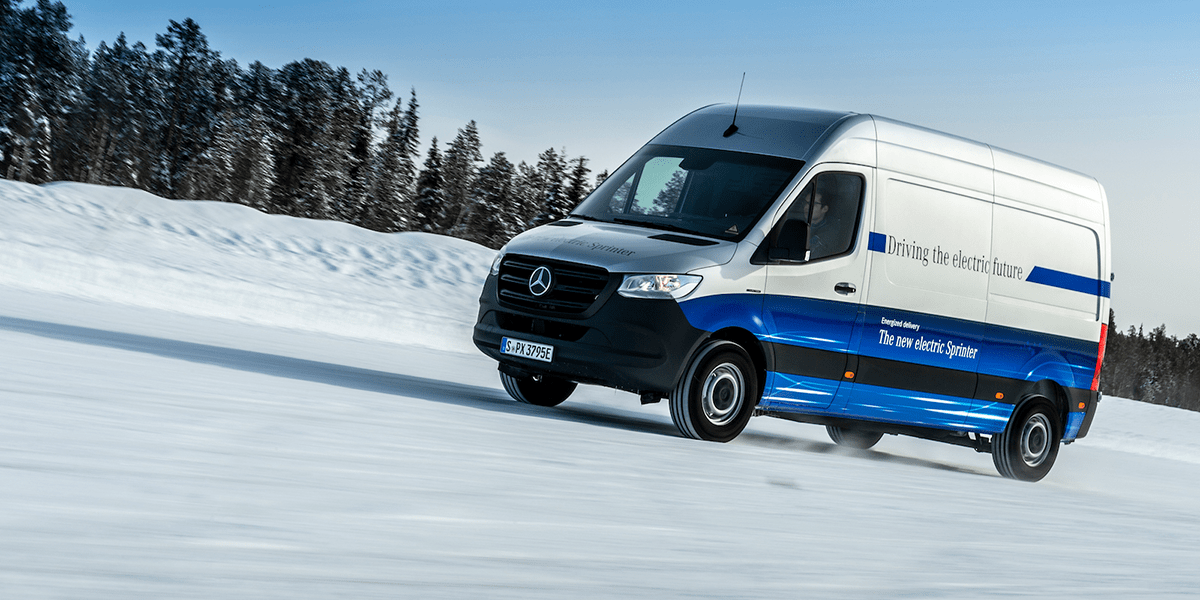
Mercedes eSprinter: cruising the arctic circle
This March, we accompanied Mercedes-Benz Vans live for their winter testing of the upcoming electric transporter in northern Sweden. The eSprinter took off from the Arctic Circle and scored well with its sophisticated thermal management system and generously packed battery.
A bright blue sky, a snow-covered landscape and an outside temperature of minus eight degrees celcius. The eSprinter stood where the temperature was considerably less comfortable, having spent the whole night in a cold cell – at 30 C degrees below zero. The difference in temperature was unpleasantly noticeable when I entered the car refrigerator, so I made a dash into the driver’s cab. There, the HVPC heater with an output of 7 kW ensured a pleasant interior temperature within a few minutes and quickly provided a clear windscreen.
I was even more comfortable with the second test vehicle, which was standing in front of the cold storage halls at the Daimler test site in Arjeplog in northern Sweden. There, the electric heater provided an agreeable climate behind the wheel even before we started our journey. By using this so-called preconditioning, I could make myself more comfortable while extending the range of the front loader. This comfort function, which can be controlled via an app or the fleet manager portal, reduces energy consumption because the heater doesn’t have to be operated at a high level for a long time. Benjamin Kaehler, head of eDrive@VANs at Daimler AG, explained that I would be even more efficient on the road if I used the standard seat heater. He thought it best to encourage eSprinter drivers to do the same, because a seat heater uses far less energy for the same effect.
Trouble-free start
After having made these insights, we finally head out to the extensive test area, which included various gradients and roundabouts, along with some icy sea passages. Even at these temperatures, the battery-electric van started without any problems. Under these conditions a diesel motor would have created a lot of unpleasant smoke.
The optimisation of the starting behaviour and the thermal management during cold starts were the essential elements of the second winter eSprinter tests in March. Daimler engineers had already put the BEV through its paces for two weeks in January. In view of the icy winds that were still whipping across the snow-covered landscape of northern Sweden two months later, it was a pleasure to be there for the second press conference.


